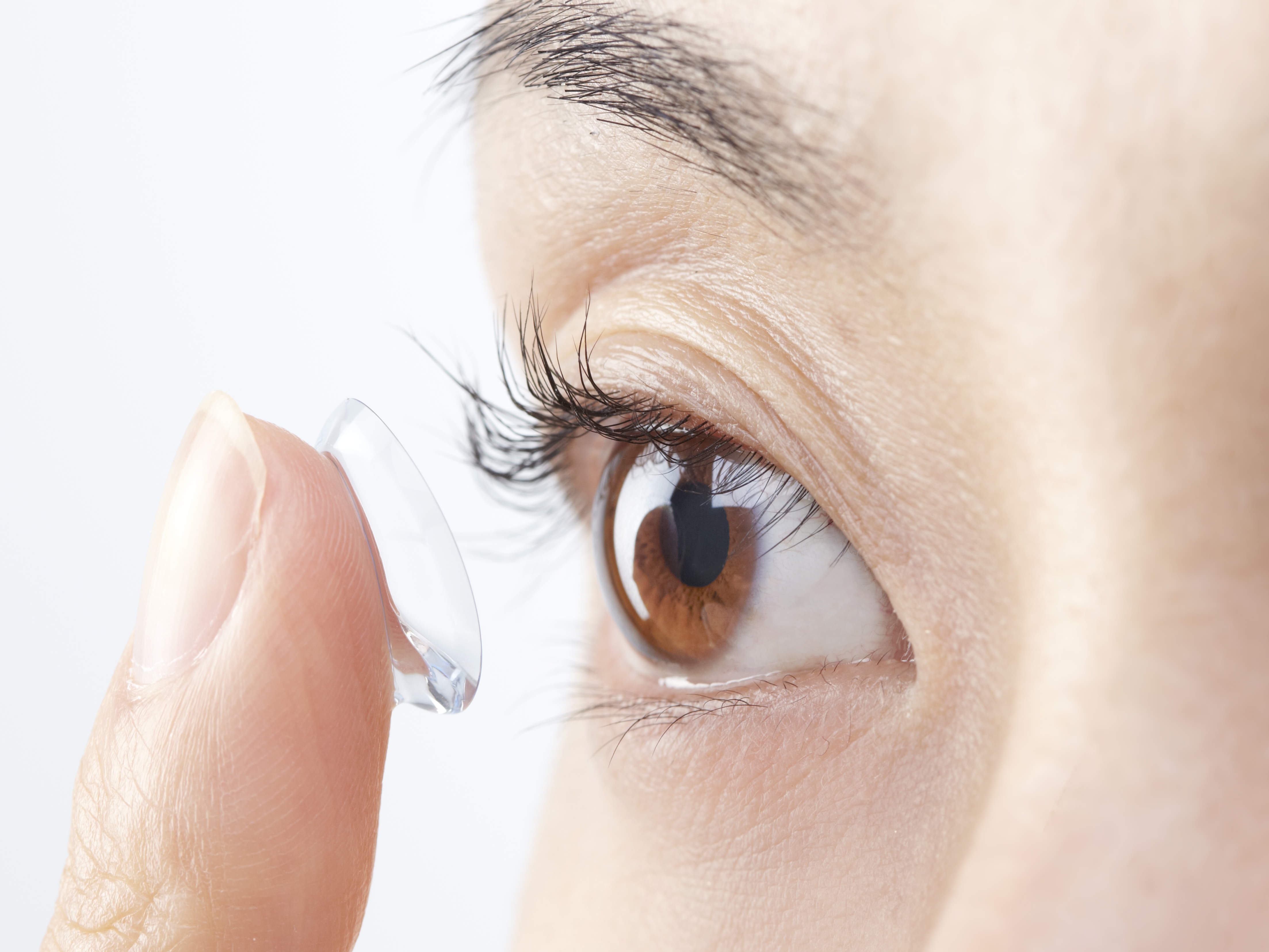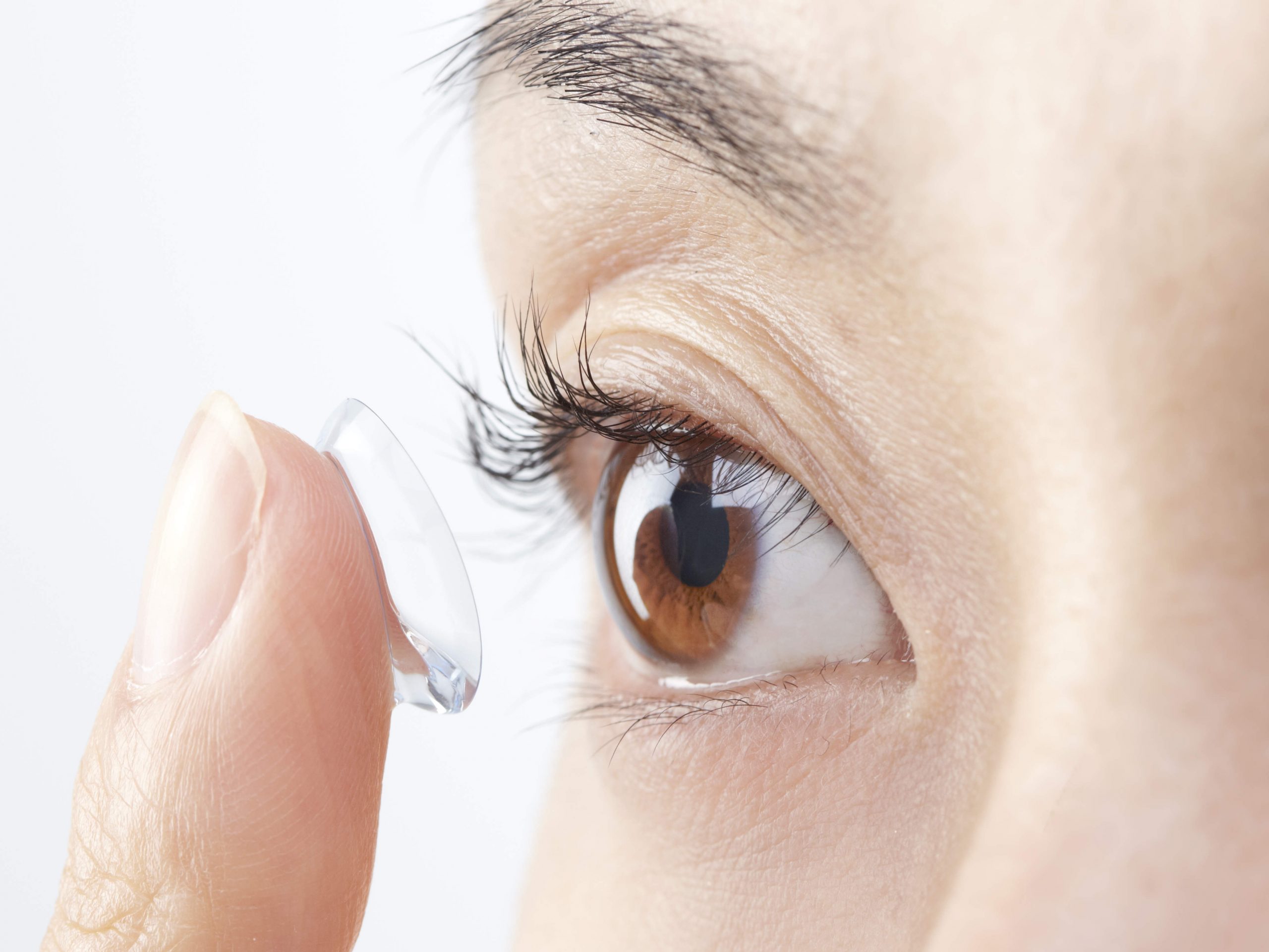The redness of the eyes is caused by the swelling or dilation of blood vessels in the sclera, that is to say the white outer surface of the eye.

They can manifest with pain in the eyes, itching, oozing, swelling or visual disturbances such as blurred vision. In other cases, a reddened eye may not cause any irritation.
This problem may develop over time or appear suddenly, particularly in response to allergies or an eye injury.
What is a reddened eye?
The “red eye” is a general term used to describe red, irritated or bloody eyes. It can also refer to:
- Subconjunctival hemorrhage or a rupture of a blood vessel in the sclera
- Blepharitis, or inflamed eyelids
- Style, or a red bump on the eyelid
- Special effects contact lenses that create a fancy appearance of reddened eyes
The severity in the appearance of reddened eyes ranges from a bright red that completely covers the sclera, to some wavy, red or pink blood vessels in the “white part” of the eye.
Red eyes are usually due to allergies, tired eyes, excessive use of contact lenses or common eye infections, such as conjunctivitis.
However, the redness of the eyes can sometimes be a sign of a more serious eye condition or diseases, such as uveitis or glaucoma. If the redness persists or worsens, always consult your optometrist or ophthalmologist to receive a correct diagnosis and treatment.
Common causes of eye redness
Conjunctivitis.
The conjunctivitis is one of the most common (and contagious) eye infections, especially among school children.
It appears when the conjunctiva – the thin and usually transparent membrane that covers the sclera and the inside of the eyelids – contracts an infection.
When the conjunctiva is infected, the blood vessels in it become irritated and swollen, giving the eye a red or pink appearance. In fact, a reddened or pink eye is a telltale symptom of conjunctivitis.
There are different types of conjunctivitis – and therefore, different ways of treating the pink eye – so be sure to visit the optometrist or ophthalmologist whenever this happens to correct the diagnosis.
Ocular dryness.
Dry eye syndrome occurs when the lacrimal glands produce either an insufficient quantity or quality of tears to lubricate and properly nourish the eyes. Chronic dry eye can cause the ocular surface to become inflamed and irritated, making the eyes look red.
While dry eye syndrome may not be curable, it can be treated. The treatment for dry eyes includes lubricating drops or “artificial tears” and lacrimal plugs. Discuss the treatment options best suited for you with your vision specialist.
Allergy.
Red eyes are often referred to as “allergy eyes,” since redness is a common indicator of an allergic reaction.
When the immune system reacts to a foreign substance, such as pollen, pet dander, dust, or certain chemicals found in makeup items or contact lens solutions, the body releases histamine as part of the response to the inflammation that takes place to counteract the allergens.
As a result, the released histamine enlarges the blood vessels of the eyes, and they become red and watery.
Avoiding known allergens to which you are sensitive or taking medications recommended by your doctor, such as antihistamine eye drops, can help control the dreaded hay fever or allergic rhinitis, especially during allergy seasons.
Contact lenses.
One of the main culprits of the red eye is the excessive use or lack of proper care of contact lenses, which can cause an accumulation of deposits and microbes that irritate the surface of the eye.
The redness of the eyes when wearing contact lenses could be a sign of serious eye infection, such as keratitis or fungal eye infections. If your eyes redden while wearing contact lenses, remove them immediately and visit your optometrist or ophthalmologist.
Also, contact lenses can aggravate dry eye syndrome, since they generally reduce the amount of oxygen that reaches the cornea and may restrict the production of normal tear flow, particularly if contact lenses have not been used. adapted well.
It is possible to reduce the risk of redness induced by contact lenses by keeping them clean and disinfected, and replacing them as directed by the specialist. The doctor may also advise the use of disposable lenses on a daily basis or a different type of material for contact lenses, such as gas permeable (GP) lenses.
Computer vision syndrome.
The red, burning and tired eyes are directly related to looking at a computer screen for too long; This can lead to computer vision syndrome. One reason is that it blinks less when working on the computer, which dries out the surface of the eye.
Among the tips for reducing eyestrain from the computer, you are doing frequent breaks in this work, modifying the workstation and using specially designed lenses for computers. Ophthalmic eye drops can also help keep your eyes moist and healthy, and even without redness.
Ocular injury
Injuries or eye injuries, such as those resulting from plastic eyelid surgery, can result in redness of the eyes, sometimes accompanied by subconjunctival hemorrhage.
In response to inflammation to the lesion, the blood vessels in the eye dilate to allow more blood to flow to the site of injury, in order to achieve a faster healing. This dilatation (and sometimes rupture) of the ocular blood vessels is the cause of the redness.
Eye injuries include minor scratches (corneal abrasions), deep wounds from a sharp object, and chemical burns. Regardless of the source, you should always treat the eye injury as a medical emergency and call a doctor immediately.
Other causes of eye redness
Corneal ulcer.
Infections in the cornea, including a corneal ulcer, are a potential risk for vision and should be treated as an emergency. In addition to eye redness, the symptoms of corneal ulcer almost always include eye pain, reduced vision and ocular secretions.
In general, the cause of a corneal ulcer is an untreated infection or trauma.
Ocular herpes.
It is a recurrent viral infection caused by the herpes simplex virus type 1, the same virus that causes common mouth ulcers. Signs and symptoms of eye herpes include redness, swelling, pain, watery discharge from the eyes and sensitivity to light.
Ocular herpes can cause scarring of the cornea if left untreated, and in some cases a cornea transplant may be needed to restore vision.
Uveitis.
Uveitis is an inflammation in the middle layer of the eye (the uvea) and is generally characterized by redness of the eyes, sensitivity to light and visual disturbances such as floating bodies and blurred vision.
Uveitis has many known causes; The most common is eye infections, injury or eye trauma, or an autoimmune systemic disorder. But in many cases, the underlying cause of uveitis is unknown.
If not treated early enough, uveitis can result in retinal detachment , cataracts, and high eye pressure, all of which can lead to permanent loss of vision.
Glaucoma.
In most cases, glaucoma is gradual and asymptomatic when it appears. But a sudden onset of redness and pain in the eyes, together with halos around the lights, loss of vision and nausea can be a sign of acute angle-closure glaucoma.
Acute angle-closure glaucoma is a condition that puts your vision at risk and requires urgent medical attention. The peak intraocular pressure (the internal pressure of the eyes) can cause a permanent loss of vision in a matter of hours, if not reduced.
Bleaching ophthalmic drops.
Ophthalmic drops marketed for eye redness contain vasoconstrictors, which are chemical products that shrink capillaries on the surface of the eye to reduce redness.
Ironically, ophthalmic bleaching drops can cause more harm than long-term benefits. Many people who regularly use ophthalmic drops formulated to “remove redness” develop a resistance to bleaching effects and need to use more and more drops to achieve the same results. Also, the chronic use of whitening eye drops can worsen the redness once its effect is lost. It is a disorder called rebound effect hyperemia.
Cold and flu.
Red, swollen eyes, along with a runny nose, are common symptoms of a cold or flu. The redness of the eyes in this context is caused by sinusitis or clogged nasal sinuses, especially when presented with sneezing or coughing.
Pregnancy.
Hormonal changes during pregnancy can affect the eyes in many ways. It is possible for the eyes to become red and dry, to feel itchy and to experience sensitivity to light.
Pregnancy can also alter the shape of the cornea and it is possible that intolerance to contact lenses is generated or even blurred vision is experienced. These problems, which include redness of the eyes, are usually temporary and will disappear completely within weeks or months after the baby is born.
Smoke.
The dangers of smoking cigarettes for the heart and lungs, as well as other associated diseases, are well known, but did you know that smoking is also harmful to your eyes?
In addition to significantly increasing the risk of macular degeneration (AMD) , cataracts and uveitis, tobacco is a toxic irritant to the eyes that can also cause dryness, redness and itchy eyes.
Smoking marijuana also generates redness in the eyes. THC, marijuana’s main psychoactive agent, causes a significant dilatation of the eye’s blood vessels, generating a redness that can last several hours or even longer.
Excessive consumption of alcohol can also cause redness of the eyes. Alcohol reduces the oxygen that reaches the red blood cells, causing the blood vessels to clump together creating a reddish complexion and reddened eyes.
AVOID RED EYES
- Do not rub your eyes. Irritants on your hands and fingers can increase redness and irritation. Also, a scratch on the cornea could be made.
- Practice proper hygiene habits when using contact lenses. Contact lenses and their cases can act as a breeding ground for harmful bacteria, so it is important to follow the instructions given by your doctor regarding cleaning and replacing lenses.
- Talk to your doctor about allergy medications to keep this problem under control.
- Rest on the computer screen at intervals, and follow the 20-20-20 rule: look away from the computer every 20 minutes and contemplate an object 20 feet away for a minimum of 20 seconds.
- Schedule an eye exam to rule out a more sinister cause of eye redness, such as an illness or infection that is a threat to your vision.
- Do not exaggerate with the use of ophthalmic bleaching drops; Over time, they can make your condition worse!
Risks in the environment and the work environment.
Extremely dry air, dust and excessive exposure to the sun are known eye irritants that can cause eye redness, in addition to other symptoms.
Corneal scratches caused by wind borne particles, such as sand and wood or metal shavings, as well as small pieces of glass can cause a serious eye injury.
Always wear safety eyewear such as safety glasses when you are at risk of foreign objects striking your eyes, be it at work, doing sports or chores around the house such as mowing the lawn.
Lack of sleep.
The appearance of your eyes is evident proof when you are tired. The eyes swollen with dark circles are signs that you have not had enough sleep. And remember: rubbing your sleepy eyes will only aggravate the redness!
Swim.
Chlorine and other pool or pool disinfectants – as well as bacteria found naturally in any type of water, be it oceans, lakes or rivers – can wreak havoc on swimmers’ eyes. If you are prone to red eyes, wear swimming goggles before diving into the water to avoid irritated and red eyes after swimming.
Also, never swim with contact lenses. That puts you at a significant risk of getting an eye infection that can be a threat to your eyes, such as Acantamoeba keratitis.
Treatment for eye redness
This treatment varies depending on the cause. Contact your optometrist or ophthalmologist to arrive at a correct diagnosis and treatment whenever you start with redness and irritation of the eyes.
If you wear contact lenses, always remove them if you are experiencing redness.
The cure for eye redness ranges from rest, cold compresses over the eyes and over-the-counter ophthalmic drops, to more aggressive treatment such as antibiotics or even surgery.
Remember; if in addition to red eyes you have pain, sensitivity to light or blurred vision, see your doctor immediately for urgent treatment

